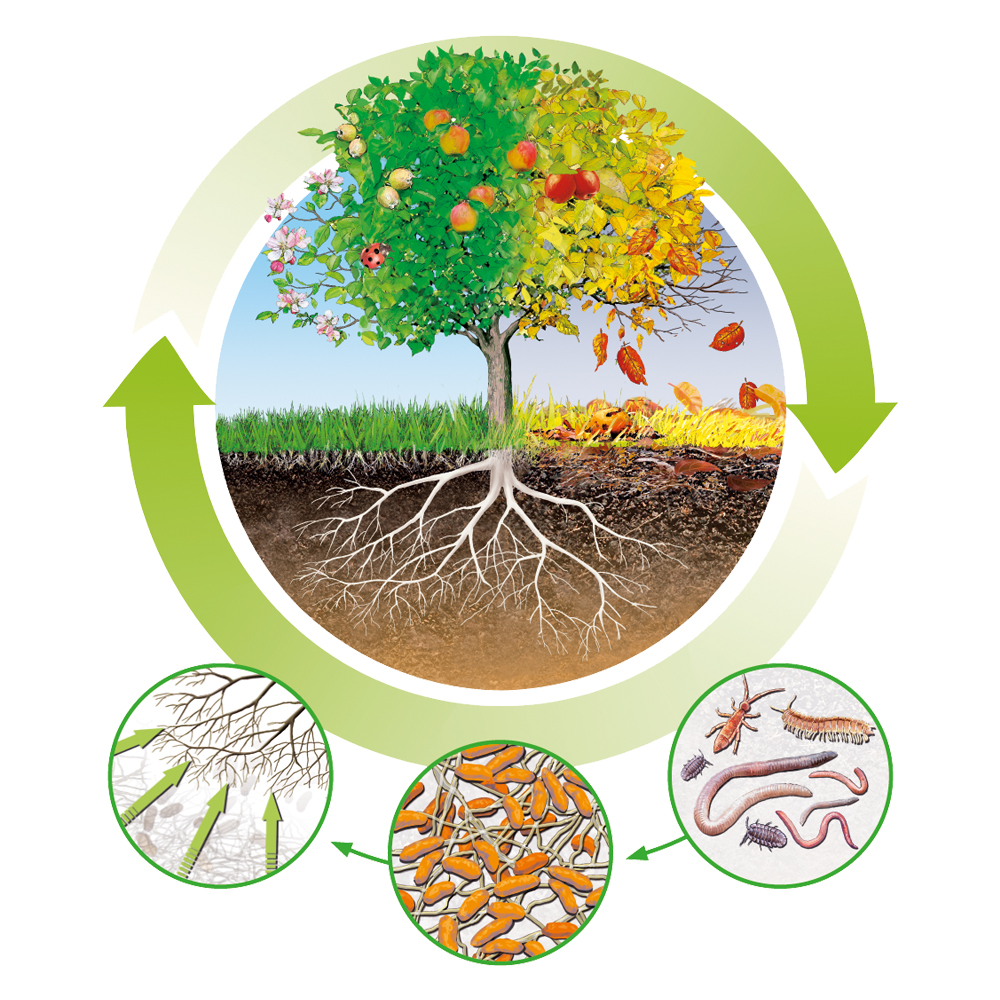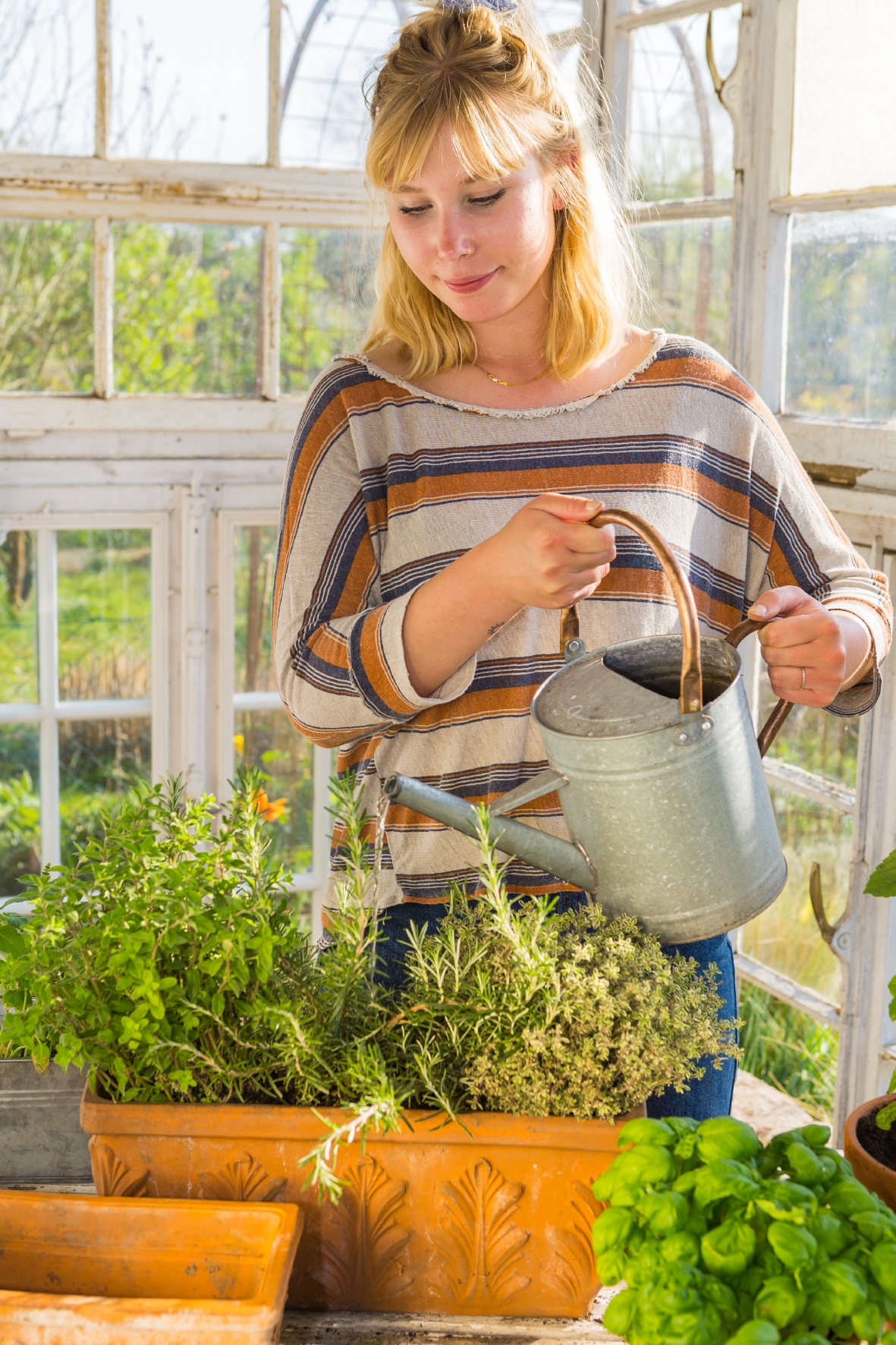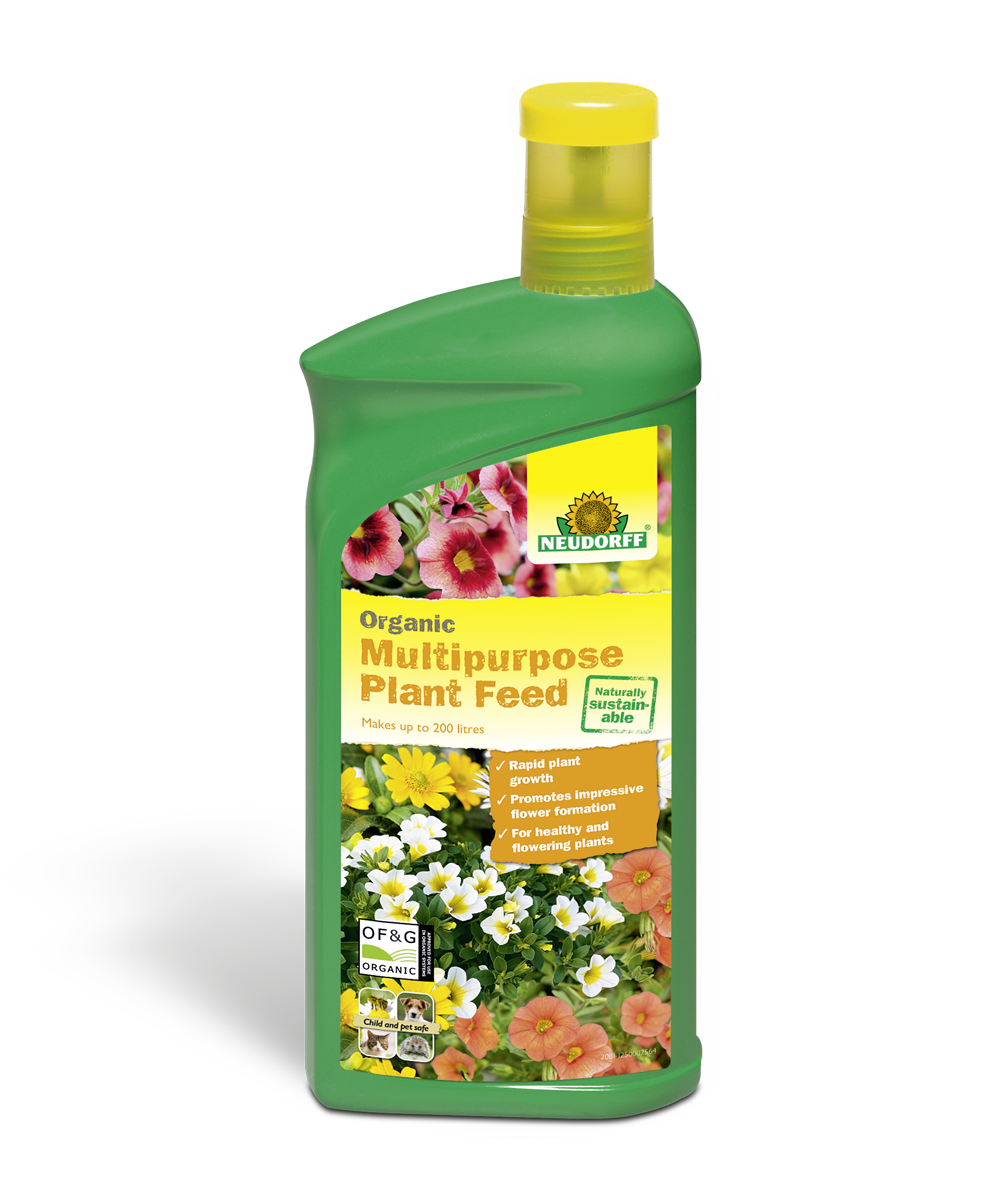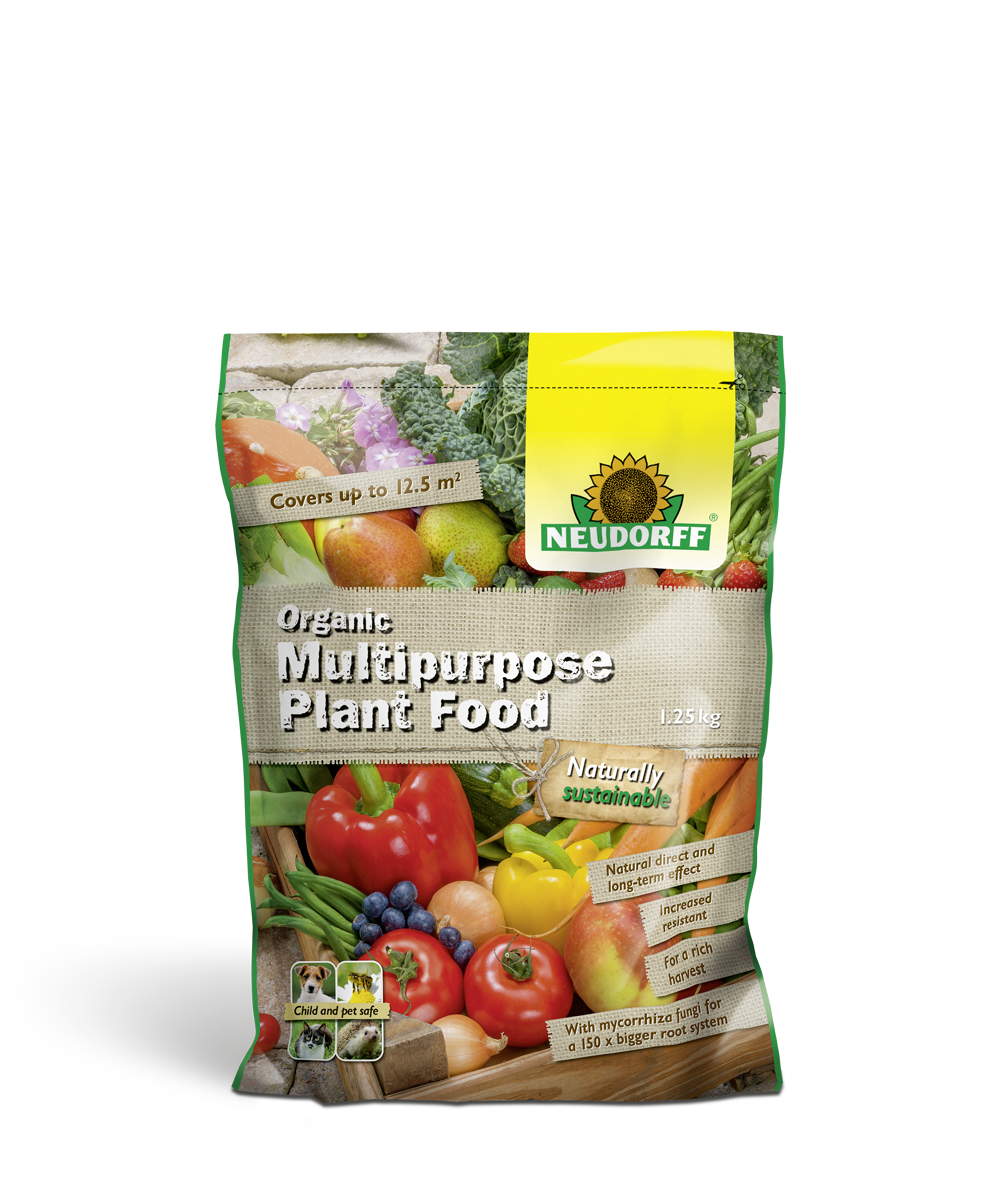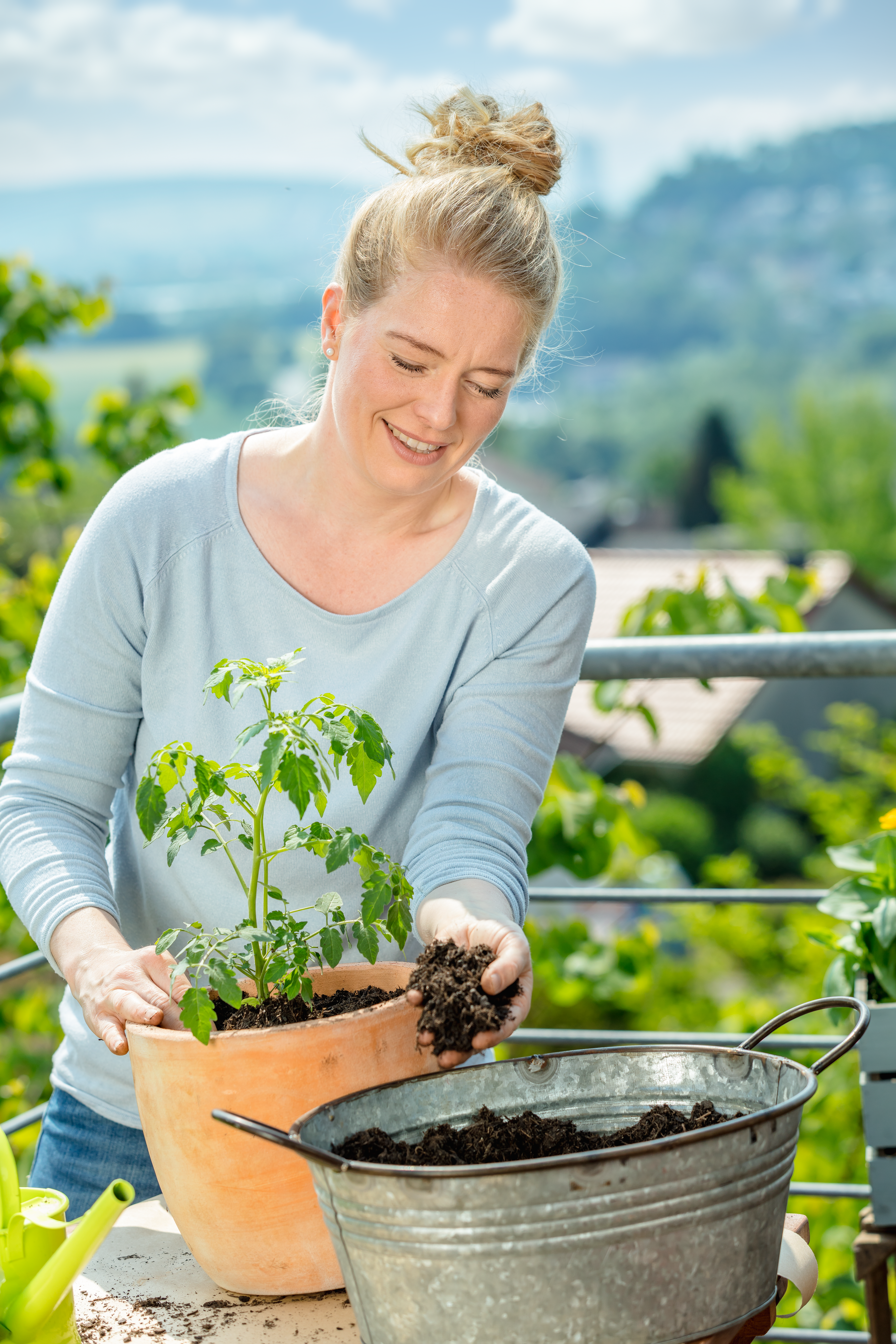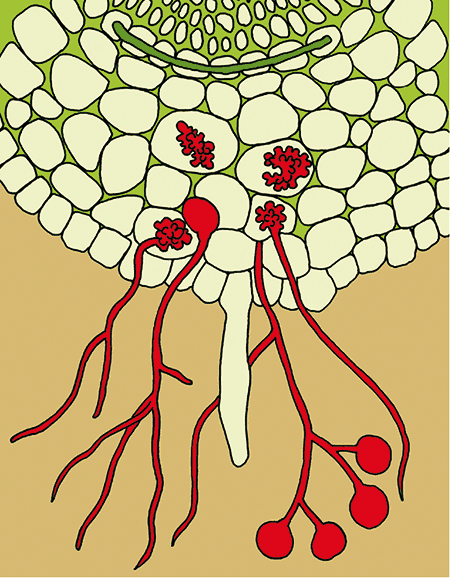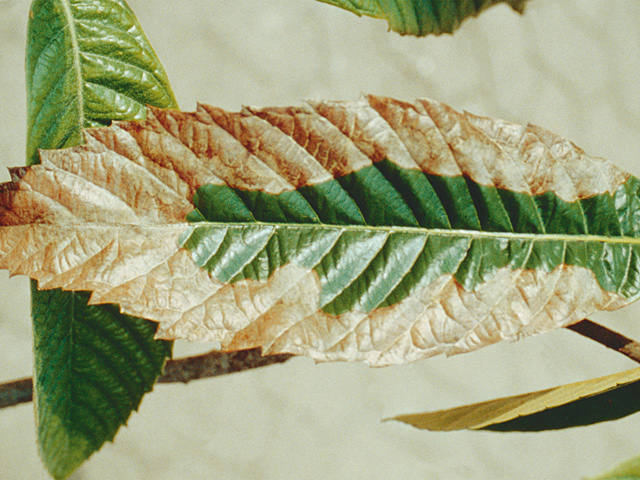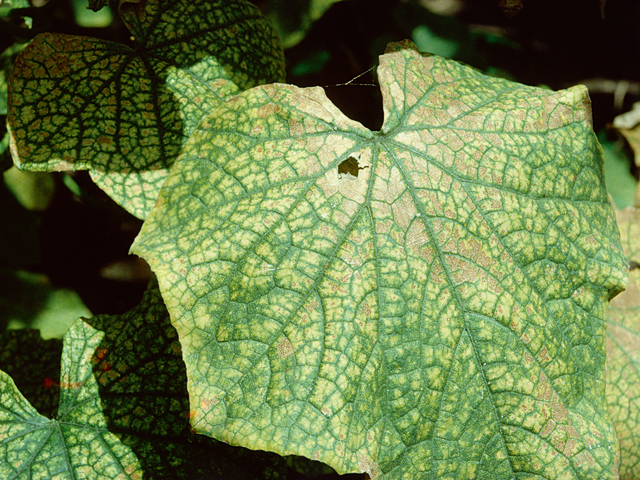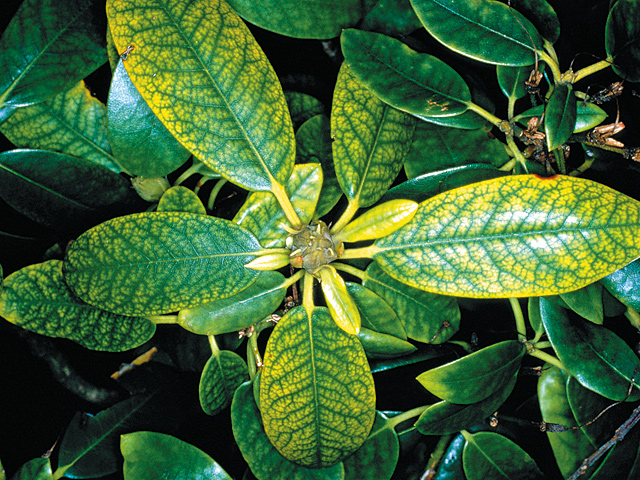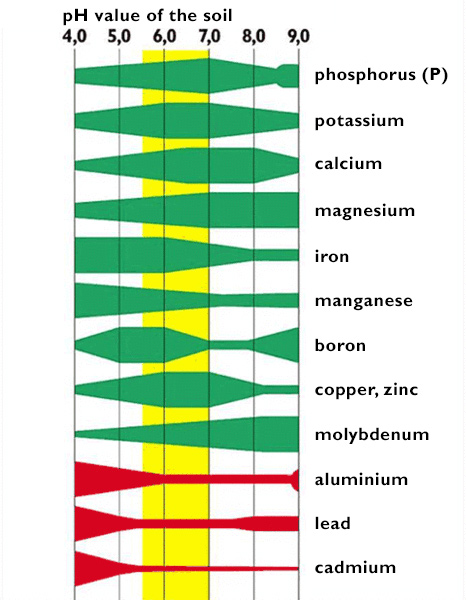
Fertilise organically
Organic fertilisers overview
No one fertilises the forest, and yet it grows and flourishes year on year. Layers of organic matter decompose into humus, rich in fertilising nutrients. In your garden this process is limited and in your potted plants, non-existent. Nutrients naturally present in the soil are consumed with time so if your plants are to grow strong, they need these nutrients replacing in the form of fertiliser.
Why organic fertiliser?
We recommend organic fertiliser for the all-round care of your plants because it includes all the nutrients and trace elements which your plants need. Our fertilisers use natural ingredients and it is this which makes them so rich in trace elements, enzymes and other ingredients which encourage growth.
Microorganisms for active soil
An important part of our fertilisers are the microorganisms that come to life once in contact with moisture. They convert nutrients into a form that plants can easily use and because they help build stable clay-humus complexes they help to loosen the soil. In loose soil, the roots grow better – and more roots means better plant growth.
Neudorff’s Organic Fertilisers
- Contain only natural ingredients
- Are safe for children and pets
- Contain microorganisms to improve soil quality
- Contain Mycorrhiza fungi for improved resistance to drought and frost
- Are effective both immediately and in the long term
- Help loosen the soil
- Do not pollute groundwater or leak into the water table
When do I have to fertilise my plants and with which fertiliser?
| Plant type | Fertiliser | Mar | Apr | May | Jun | Jul | Aug | Sep | Oct |
|---|---|---|---|---|---|---|---|---|---|
| Strawberries | Organic Multipurpose Plant Food | • | • | ||||||
| General garden maintenance | Organic Multipurpose Plant Food | • | • | • | • | ||||
| Hedges | Organic Multipurpose Plant Food | • | • | ||||||
| Conifers, firs | Organic Multipurpose Plant Food | • | • | ||||||
| Fruit trees, berry bushes | Organic Multipurpose Plant Food | • | • | ||||||
| Tomatoes, cucumbers, peppers | Organic Multipurpose Plant Food | • | • | • | • |
(•) Only applicable when deficiencies are visible
Background knowledge
Is it necessary to fertilise plants?
In forests or in the open countryside, nature itself provides enough food for plants and animals. Through the decomposition processes of plant residues and other organic material, new nutrients are constantly produced. The soil life is essential to this process: many small creatures such as isopodes, earthworms and beetles, and numerous micro-organisms (fungi and bacteria) are involved. The diversity of these organisms in the soil ensures the transformation of organic material (leaves, crop residues, fallen fruit, etc.) into nutrients that are available for the plants to re-use. A principle of recycling which we make use of in a similar way when composting. The use of compost cannot completely replace fertilisation because compost does often not contain sufficient nutrients.
In most gardens, the natural recovery of nutrients is disturbed because we pick flowers, harvest fruits and vegetables and cut the lawn. By doing so, we take a lot of resources from the natural cycle. Without our intervention, these organic raw materials would be transformed back into plant nutrients by the microorganisms in the soil. This is why additional fertilisation is necessary to prevent the ground from being depleted and to ensure enough nutrients are available for the plants.
Which types of fertilisers exist?
Fertilisers are classified according to various criteria:
- origin (organic / mineral)
- content of nutrients (compound fertilisers / single nutrient fertilisers)
- form (solid / liquid)
- application (e.g. lawn fertilisers, tomato fertilisers)
There is a distinction between organic and mineral fertilisers.
Mineral fertilisers contain nutrients in the shape of nutritive salts. They can be taken up directly by the plant, which means they are immediately effective. For the microorganisms in the soil and thus for the soil structure, these salts are useless.
Organic fertilisers are made from natural raw materials. All Neudorff fertilisers are 100% organic fertilisers. They are converted through transformation processes (mineralisation) by soil organisms into a form that is absorbable by plants. This is why the effect of organic fertilisers is continuous and lasts for a longer period of time than their mineral countaparts.
Most available fertilisers are known as compound fertilisers which contain three main nutrients (nitrogen, phosphorus, potassium). Their composition matches the needs of the plants for which they are designed for.
In addition, there are single-nutrient fertilisers that contain only one nutrient, for example iron or potassium fertilisers.
Such single-nutrient fertilisers are only effective in curing deficiency symptoms.
A plant will begin to show deficiency symptoms when only one nutrient is not available in the correct quantity. However, it is not only the amount of nutrients that is essential for a vital growth, but also a balanced combination of all required nutrients. Your plants are optimally supplied by “organic compound fertilisers" like Neudorff’s Organic Multipurpose Plant Food.
Neudorff’s fertilisers are available in these forms:
recommended for plants in pots and tubs, especially for repeat fertilising during the main phase of growth
particularly suitable for the garden, for tubs and window boxes as a long-term fertiliser with soil-improving qualities
The benefits of organic fertilisers
Fertilisers made from natural raw materials have many advantages:
- they help you grow organic fruit and vegetables in your own garden,
- have a natural long-term effect,
- provide the nutrients evenly and according to the plant’s needs,
- supply nutrition for the plants and for micro organisms inhibiting the soil,
- not only contain the main nutrients, but also vitamins and trace elements which makes them a real "whole food" for plants,
- can be applied immediately when sowing and planting,
- are very well tolerated by plants, which means there is no danger of "burning" when used properly
- contribute to a healthy, loose soil structure.
A variety of soil organisms significantly contribute to the formation of humus, thus ensuring a naturally healthy soil.
Because soil organisms become active under the same conditions as plants, nutrients are released at the same rate as the plants grow and need nutrition. Therefore, organic fertilisers are also long-term fertilisers: they provide their nutrients through the activity of soil organisms according to the needs of the plant. They may even be used when planting or sowing, as there is no risk of burning.
In short: Organic fertilisers provide a naturally healthy soil and vital plants.
Neudorff's fertilisers
What's inside Neudorff’s fertilisers?
In our fertilisers we use only natural and quickly renewable raw materials that are subject to strict quality controls. These include feather meal, bone meal and vinasse derived from sugar beet. A balanced mix of raw materials covers the plants’ requirements of all the major nutrients nitrogen, phosphorus and potassium. Plenty of trace elements and vitamins for a vital growth are also included.
Organic solid fertilisers from Neudorff:
- work immediately and over a long period of time. Your advantage: often one single application of fertiliser is sufficient for a whole year!
- contain soil improving microorganisms and therefore ensure healthy soil.
- are safe for pets, therefore treated areas (lawn / flower beds) can be used immediately after fertilisation with Neudorff’s Organic fertilisers
Range
We offer a whole range of organic fertilisers to care for your plants optimally. With the correct nutrition for each plant you can use these fertilisers from neudorff:
Organic fertiliser for ornamental plants
Organic universal fertiliser
Organic Multipurpose Plant Food
Organic Multipurpose Plant Feed
Organic fertiliser for vegetables
Microorganisms help plants
All Neudorff’s solid Organic fertilisers contain beneficial microorganisms. These microorganisms help release the organically bound nutrients in the fertiliser and revitalise depleted garden soils. The added mycorrhiza fungi improves the plant’s nutrient and water uptake.
The mycorrhiza fungi form a symbiosis with the plant roots. They lay around the sensitive plant roots like a glove and enlarge the surface area of the roots by up to 150 times. As they have a finer structure than the plant roots, they exploit additional water and nutrients in the soil. As a result, the plants grow better and are more resistant to drought and unfavourable soil conditions.
You can notice this as, among other things, you may need to water less!
All about nutrients
What nutrients does the plant need?
Light, warmth, carbon dioxide and water are essential for the life of plants. In addition, they need nutrition:
- Essential for all cultivated plants are the main nutrients nitrogen, phosphorus, potassium, sulphur, calcium and magnesium. Plants need these in larger quantities.
- As trace elements, which means in very small amounts, they also need, amongst others, iron, manganese, zinc, copper, chlorine, boron and molybdenum.
Each of these nutrients has certain tasks in the plant’s metabolism that are explained by the examples below:
TIP
Sulphur is one of the main nutrients (such as N, P, K). For a long time our soil was sufficiently supplied with it by the air’s content of sulphur but due to flue gas desulphurization, the sulphur content of the air and of the soil is now too low.
The result is that additional sulphur must be applied by fertilising!
Neudorff fertilisers contain a sufficient amount of sulphur (1-3%) due to the natural raw materials that are used in their manufacture.
| sulphur (S) | energy metabolism, formation of amino acids | youngest leaves turn bright yellow (similar to nitrogen deficiency), stems remain thin and woody |  |
How do plants take up nutrients?
Plants take up the nutrients for growth and for the formation of blossoms and fruits via their roots, leaves and needles and pass them on via shoots and stems.
In the soil the root hair (thin, fine roots with large surface) is particularly important as it ensures the absorption of water and the nutrients contained within it. Without water, plants can not absorb nutrients! Therefore, a sufficient water supply is essential.
For absorption to take place the root needs energy, which it obtains through so-called "root respiration". Therefore, the root must be well supplied with oxygen. This is ensured by good soil aeration.
In addition, the uptake of the vital nutrients depends on the acidity (pH value) of the soil. If the soil is too acidic, plant roots struggle to absorb nutrients effectively, if at all.
Therefore, the pH value of the soil should be measured before fertilisation. This is easily done with a soil pH testing kit, available from most large garden centres.
The pH value indicates the soil’s requirement of lime. Lime is essential for the maintenance of soil fertility. It de-acidifies the soil, improves soil structure and enhances the soil life. The soil organisms thrive in well ventilated, slightly acidic to neutral soil (pH value between 5.5 and 7.0). If the pH value is below 5.5 it is necessary to add lime to your soil.
TIP
Check the pH value of your soil every spring with a pH testing kit. If necessary, use lime to activate the soil life, loosen the soil and make it fertile again.


